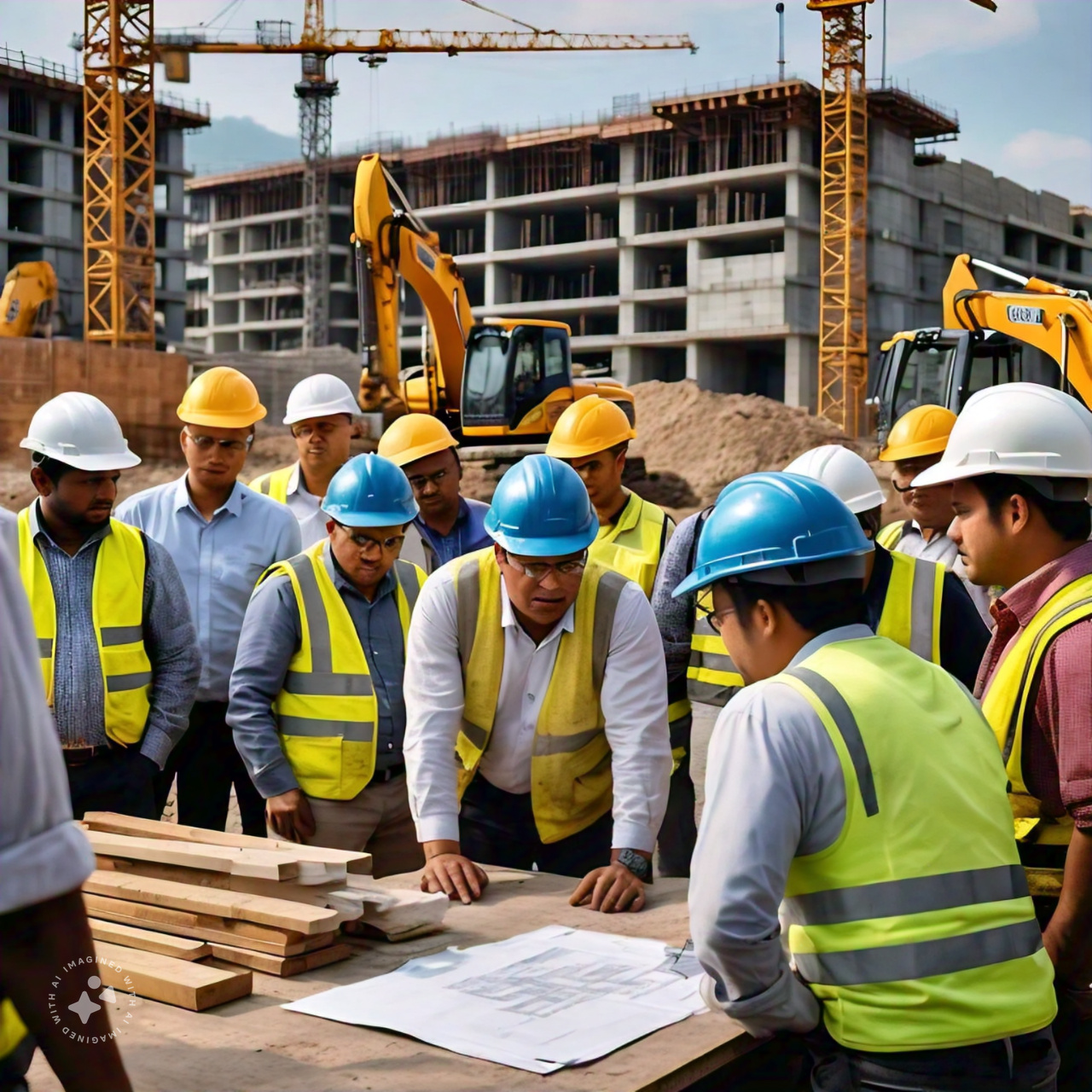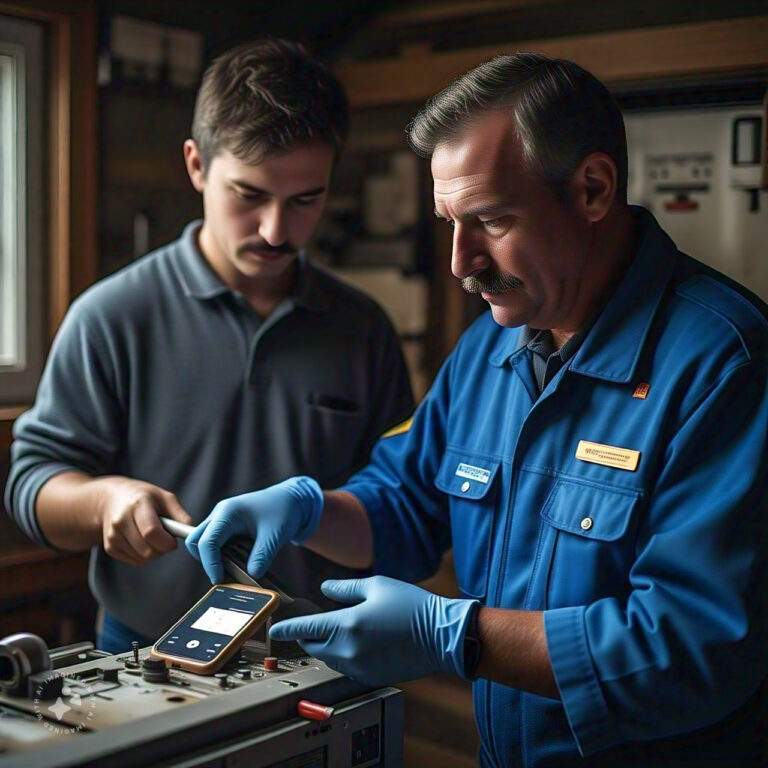Imagine being in a tight, dimly lit space, with no room to stretch your arms or take a deep breath. The air is heavy, almost suffocating, and the walls seem to close in on you.
This is just a glimpse of what it feels like to work in a confined space as a construction worker.
But why is confined space training so crucial for you? Well, let’s just say that your life may depend on it.
The Definition of Confined Spaces
Confined spaces are defined as areas that aren’t intended for continuous occupancy and have limited means of entry and exit. These spaces can be found in various settings, such as construction sites, industrial facilities, and even in residential buildings. Examples of confined spaces include storage tanks, crawl spaces, and underground tunnels.
The defining characteristic of a confined space is its limited means of entry and exit. This means that workers entering these areas may face challenges in terms of mobility and escape in case of an emergency. Additionally, confined spaces often have hazardous conditions, such as poor ventilation, toxic gas accumulation, or the potential for engulfment.
It is crucial for construction workers to understand the definition of confined spaces to ensure their safety while working. By recognizing these spaces and the risks associated with them, workers can take appropriate precautions, undergo necessary training, and use specialized equipment to mitigate potential hazards and prevent accidents.
Identifying Hazards in Confined Spaces
To ensure your safety as a construction worker, it’s crucial to carefully identify and assess the potential hazards that may exist within confined spaces. Confined spaces are characterized by limited entry and exit points, as well as poor ventilation, which can create a hazardous environment.
One common hazard is the presence of toxic gases or fumes, which can lead to asphyxiation or respiratory issues. Additionally, confined spaces can pose risks of engulfment, where workers may be trapped by loose materials or substances. Other hazards include the potential for falls, electrical shock, or exposure to extreme temperatures.
The Importance of Proper Ventilation
Proper ventilation is essential for ensuring a safe and healthy working environment in confined spaces. When working in confined spaces, such as tunnels or tanks, the air quality can deteriorate quickly due to the accumulation of hazardous gases, fumes, or dust. Without proper ventilation, these substances can reach dangerous levels, posing a serious risk to workers’ health and safety.
Adequate ventilation helps to remove or dilute these contaminants, ensuring that workers have access to clean and breathable air. It also helps to control the temperature and humidity levels, preventing the buildup of heat stress and reducing the risk of accidents.
Essential Equipment for Confined Space Entry
When ensuring a safe and healthy working environment in confined spaces, it’s crucial to have the essential equipment for entry. Without the right tools, workers are at risk of accidents, injuries, and even fatalities.
The first piece of equipment that should be available is a gas detector. This device is used to measure the levels of oxygen, toxic gases, and flammable substances in the confined space. It helps workers identify potential hazards and take the necessary precautions.
Another crucial equipment is a full-body harness with a retrieval system. This ensures that workers can be quickly and safely rescued in case of an emergency.
Additionally, a tripod and winch system should be in place to assist in the retrieval of workers from confined spaces.
Lastly, proper lighting, communication devices, and personal protective equipment such as helmets, gloves, and goggles are essential to ensure the safety and well-being of workers in confined spaces.
Developing Emergency Response Plans
Ensure the safety of workers in confined spaces by developing effective emergency response plans.
When working in confined spaces, it’s crucial to have a well-executed plan in case of emergencies. Begin by identifying potential hazards specific to the confined space and create a comprehensive plan that addresses each one.
This plan should include evacuation procedures, communication protocols, and a clear chain of command. It’s essential to train all workers involved in confined space operations on the emergency response plan, ensuring that they understand their roles and responsibilities.
Regular drills and simulations should be conducted to test the effectiveness of the plan and identify any areas for improvement. By developing and implementing a robust emergency response plan, you can minimize the risks associated with working in confined spaces and protect the well-being of your workers.
Frequently Asked Questions
What Are the Legal Requirements for Confined Space Training in the Construction Industry?
You need to be aware of the legal requirements for confined space training in the construction industry.
It’s crucial for your safety and compliance with regulations.
How Often Should Confined Space Training Be Conducted for Construction Workers?
Confined space training should be conducted regularly for construction workers to ensure their safety.
It’s important to stay updated with the latest regulations and practices to minimize risks and prevent accidents.
Are There Any Specific Certifications or Qualifications Required for Construction Workers to Enter Confined Spaces?
There are specific certifications and qualifications required for construction workers to enter confined spaces.
It’s important to have the necessary training and credentials to ensure safety and compliance with regulations.
What Are Some Common Health Risks Associated With Working in Confined Spaces?
Working in confined spaces poses several health risks. Lack of oxygen, exposure to toxic gases, and potential for fires or explosions are common dangers.
Proper training is essential to mitigate these risks and ensure worker safety.
How Can Construction Workers Effectively Communicate and Maintain Contact With Their Team Members While Working in Confined Spaces?
To effectively communicate and maintain contact with your team members while working in confined spaces, use handheld radios or signal systems.
This ensures clear and immediate communication, enhancing safety and coordination on the construction site.
Conclusion
So, as a construction worker, it’s crucial for you to undergo confined space training.
This training will help you understand the definition of confined spaces and identify potential hazards.
Knowing how to ensure proper ventilation and having essential equipment for confined space entry are also vital.
Additionally, developing emergency response plans is essential to keep yourself and others safe.
By taking these precautions, you can minimize the risks associated with working in confined spaces and ensure a safer work environment.







